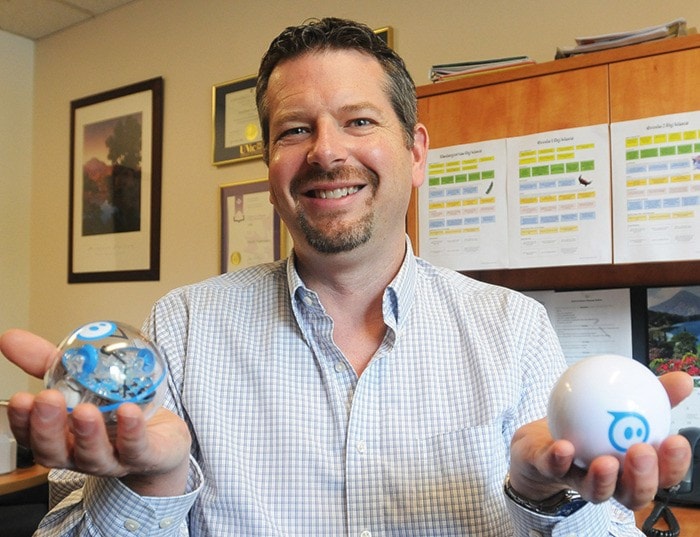Kids are back to school this week and the Maple Ridge-Pitt Meadows school district is booting up new ways to teach coding and technology.
Premier Christy Clark expressed the government’s desire to see coding in classrooms early in 2016, and School District No. 42’s director of instruction, David Vandergugten, offered some insight into what students will be doing.
His favourite mode of teaching coding is with a program call Scratch, developed at Massachusetts Institute of Technology specifically to introduce kids to code.
“It’s like Lego blocks. Its fun.”
Scratch overlays code the way that Windows overlays DOS.
It creates a more user friendly interface, where users take blocks of code and stick them together.
“Instead of having to type these archaic commands,” Vandergugten explained.
Most importantly, Scratch coding teaches kids computational thinking.
“They’re taking a larger problem and breaking it down into smaller problems that can be solved,” he said.
“That’s a valuable skill in any context.”
Students don’t get an A or a C-plus on a coding worksheet.
“The feedback the kid gets is, ‘My game is working.’”
Scratch is a program that students and their parents should get to know.
“It’s brilliant – MIT has the top thinkers in the world. It’s as complex as you want it to be.”
One of the challenges for the district will be training teachers in the new technology.
Clark made broad pronouncements in January 2016, about the need to teach children coding and support the province’s growing tech sector.
Then in June, the Education Ministry announced $6 million in funding – $2 million for teacher training, $2 million for curriculum development and another $2 million for equipment purchases, with a goal to have every student to take a module of basic coding by the end of Grade 9.
Vandergugten said the district is still waiting for specific details from the ministry, and it will have to start with teacher in-service training.
But technology is already finding its way into classrooms, aimed primarily at students in Grades 6-9, but with exposure at younger grades.
Sphero is a robot and so-called smart toy – a little baseball-sized orb packed with electronics that allow it to be programmed. It is app-enabled through a smartphone or tablet, using Bluetooth technology.
Kids set up a course and program their Sphero to navigate it. With added complexity like carpets and ramps, students will have to account for friction, momentum and other factors. Again the feedback is immediate – either Sphero stops at the top of a ramp as intended, or it falls. Each school will be getting a set of a dozen Spheros.
The popular online game Minecraft has been retooled for teachers at minecraft.edu.
“Teachers have created whole worlds where you can explore the pyramids, or explore medieval Europe.”
The goal is to make learning fun, and to blend social studies, math and core subjects into technical learning.
“Our goal, as a district, is not to make every kid a computer scientist,” he said, but to teach everybody some of the basics about computer sciences.”
Vandergugten has heard estimates that in as little as 10 years, millions of driving jobs in North America will be lost to driverless automobiles.
Self-driving vehicles are being tested now, and four U.S. states have passed legislation allowing driverless cars.
“We’re preparing students for a future that we don’t know about,” he said.
“What jobs will we be looking for? It’s going to be around technology.”
